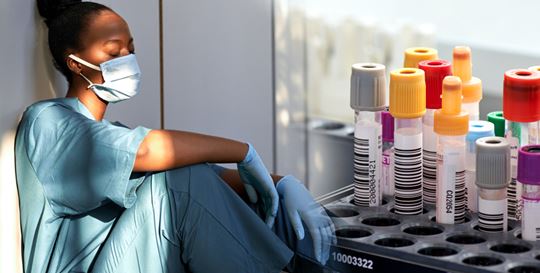Automation for All
Automation systems in clinical labs is not a new concept. The Japanese had developed a Clinical Laboratory automation system in the early 1990s,1 and since then, many parts of the world have adopted the concept. But now, lab automation is becoming more crucial than ever to clinical laboratories as they are facing a unique set of challenges.
Space constraints and business demands are at the heart of what is driving more and more laboratories to upgrade their automation systems. A good automation system allows labs to meet the higher demand in healthcare for faster and more accurate results, so that the focus is where it belongs: advancing patient care.
At the same time, the industry is experiencing a well-known labor shortage, with the retirement rate at the highest it has ever been, according to The American Society for Clinical Pathology’s 2016-2017 vacancy survey of medical laboratories in the United States.2 There is a gap when it comes to available, trained employees, and work needed to be done.
A Need for Automation
Labs of all sizes would benefit from a thoughtful automation system, especially with laboratory directors having trouble finding qualified laboratory professionals, according to Medical Laboratory Observer Online.3 Whether your lab is a small-, mid-, or high-volume laboratory, automation within clinical diagnostics is a must. Otherwise, your laboratory may lose business to competitors who can provide better service with less overhead and a faster turnaround time.
Good Reasons to Switch to Laboratory Automation
There are several good reasons why labs might shift towards current and new advances in automation. If implemented correctly, automation could provide laboratories with the potential to:
- Reduce human errors – labs spend nearly 60% of their team during the pre-analytical phase, and that accounts for 75% of the errors made in the process. An automated laboratory provides consistent results and eliminates the human factor when it comes to errors, improving turnaround times and focusing on patient care while potentially reducing wait times at hospitals.
- Helps decrease burnout – automated machines have less downtime and can be run 24/7, allowing technicians to have some much-needed breaks during this high-stress time period.
- Dynamically reallocate technicians – redeploy technicians away from routine, repetitive tasks, allowing them to oversee the automation rather than perform the actual tests themselves and focus on other value-added duties.
- Reduce repetitive stress injuries – technicians are no longer repeating the same manual tasks which can cause repetitive stress injuries. Automated equipment such as an automatic tube sorter reduces the drudgery of sorting test and sample tubes.
- Decrease laboratory congestion – in the laboratory technician model, technicians worked with samples at their workstations. This led to large numbers of employees working in a particular area, which often caused congestion and confusion. With fewer employees and the bulk of the samples being handled by automation in clinical diagnostics, there is less congestion.
- Establish a small footprint – when you are a lab director, space in your lab is at a premium. There are automation solutions that can be designed to fit your exact space needs.
- Create a safer workplace for employees – with less handling of samples, there is less exposure to potential pathogens. Your employees stay safer as a result.
- Implement cloud based technology – many automated solutions provide secure and HIPAA-certified cloud-based solutions. This enables approved medical professionals and the patient to access the patient's results.
Designing Automation for Your Laboratory
One approach to consider when determining which automation system would best fit your lab’s needs is to hire a workflow consultant who can help map out the tasks performed in your laboratory.4 That way, you not only have an idea what equipment you need, but also what tasks must be performed. You may also want to hire a project manager as a consultant to plan out your automation's implementation. You will also need to have on board an integration specialist who can ensure that all systems are interacting with each other the way they should.
With the unique challenges that laboratories are facing during this stage of the pandemic, labs of all sizes, not just high-volume ones, have an urgent need for automation. Beckman Coulter’s automation portfolio has something that could fit every lab’s space constraints, and with the use of thoughtful and intuitive automation, can ease the burden on directors and technicians alike.

 English
English





